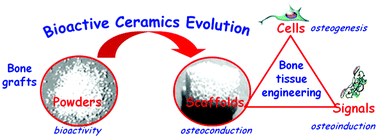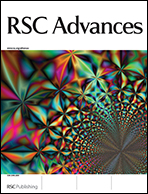Bioactive ceramics: from bone grafts to tissue engineering
Abstract
Bioactive ceramics bond directly with living tissues when implanted. For this reason they have been profusely investigated as biomaterials. The first synthetic bioactive materials were specific compositions of glasses and glass ceramics as well as sintered hydroxyapatite. However, all these bioceramics are brittle, and for this reason their main application for years has been as a grafting material for the filling of small bone defects and periodontal anomalies. The efforts to expand the applications of bioactive bioceramics were mainly focused in two areas: (A) the synthesis of organic–inorganic hybrids to apply in tissue engineering and of ceramic coatings on metallic substrates for applications requiring good mechanical behavior, and (B) the synthesis of porous materials with very quick bioactive response that can be upgraded by adding biomolecules or therapeutic inorganic ions to be used in bone tissue engineering. For these developments, the in vitro studies in solutions mimicking blood plasma played a major role. At the present, it is universally considered that both bioactive and biodegradable materials are going to play a central role in the fabrication of porous scaffolds that after being decorated with cells and signals form constructs: basic elements of tissue engineering. This article reviews the pathway followed by the bioactive materials from their original applications in bone grafts to the present day where they are widely investigated as porous scaffolds for bone tissue engineering. After defining the concept of bioactivity, important bioactive materials will be listed in this article. Then, the specific characteristics of bioactive materials when used in bulk or coatings as well as the comparison with biodegradable materials will be presented. Finally, and after describing the in vitro studies for the evaluation of bioactive ceramics, the main characteristics of template glasses, compared with conventional sol–gel glasses, and the advantages of using porous bioactive ceramics to obtain scaffolds for bone tissue engineering will be explained.

- This article is part of the themed collection: Bioactive surfaces for hard tissue regeneration

 Please wait while we load your content...
Please wait while we load your content...